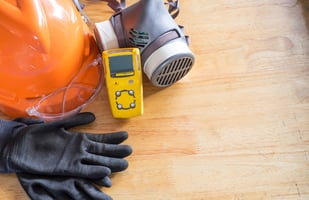In environments where the presence of hazardous gases is a constant concern, gas detectors play a...
Catalytic Gas Sensor Poisoning: A Silent Threat to Safety
Catalytic gas sensors are widely used in gas detection systems to identify combustible gases. However, these sensors are susceptible to a phenomenon known as poisoning, which can significantly impair their ability to detect dangerous gas concentrations accurately. Understanding this issue is crucial for maintaining a safe working environment.
How Catalytic Gas Sensors Work
Catalytic gas sensors typically consist of two ceramic beads called pellistors, connected in a Wheatstone bridge circuit. One pellistor has a catalyst layer containing platinum wire, while the other serves as a reference. When combustible gases come into contact with the catalytic bead, they oxidise, causing the bead to heat up. This temperature change alters the electrical resistance of the platinum wire, which is detected as a signal indicating the presence of gas.
The Poisoning Process
Sensor poisoning occurs when certain substances interfere with the catalytic reaction, reducing the sensor's sensitivity or rendering it completely inoperative. This process can happen gradually over time or suddenly upon exposure to specific chemicals.
When poisons come into contact with the heated catalytic bead, they instantly melt and adhere to the surface, creating a layer that prevents the sensor from detecting combustible gases. Once this encapsulation occurs, there is no way to remove the poison, and the sensor must be replaced.
Common Poisons and Their Effects
Several substances can act as poisons to catalytic gas sensors:
Silicon Compounds: Silicones, often found in lubricants, sealants, and even common items like lotions and hair products, are among the most potent poisons.
Lead Compounds: Lead can deposit on the sensor, reducing its catalytic activity and sensitivity.
Sulphur Compounds: These can chemically react with the catalyst, permanently altering its composition.
Phosphorus Compounds: Similar to silicon, these can form a coating on the sensor.
Inhibitors: A Related Concern
While not as destructive as poisons, inhibitors can also negatively affect sensor performance. Common inhibitors include:
- Halogenated compounds
- Substances containing astatine, bromine, fluorine, chlorine, and iodine
Inhibitors can desensitize the bead and may shorten its lifespan, but after calibration and bump testing, the sensor may still be usable.
The Importance of Accurate Gas Detection
Accurate gas detection is critical for several reasons:
1. Safety: Inaccurate readings can lead to false alarms or, more dangerously, failure to detect hazardous gas concentrations, putting lives at risk.
2. Regulatory Compliance: Many industries are required by law to maintain functional gas detection systems.
3. Operational Efficiency: Reliable gas detection helps prevent unnecessary shutdowns and ensures smooth operations.
How Bump Testing Facilitates Accurate Measurement
Bump testing is a crucial practice in maintaining the reliability of gas detectors:
1. Verification of Sensor Response: A bump test exposes the sensor to a known concentration of gas, verifying that it can detect and respond to the presence of gas.
2. Early Detection of Poisoning: Regular bump tests can reveal a gradual decline in sensor sensitivity, potentially indicating the early stages of poisoning.
3. Confirmation of Alarm Systems: Bump tests ensure that not only the sensor but also the alarm systems are functioning correctly.
4. Compliance with Safety Standards: Many safety regulations require regular bump testing of gas detection equipment.
Best Practices for Preventing and Managing Sensor Poisoning
To mitigate the risks associated with catalytic sensor poisoning:- Conduct regular bump tests, ideally before each use of the gas detector.
- Perform full calibrations as recommended by the manufacturer, typically every 6 months.
- Be aware of potential poisons in your work environment and take steps to minimize exposure.
- Replace sensors that show signs of poisoning or reduced sensitivity.
- Keep detailed records of bump tests, calibrations, and any incidents of exposure to potential poisons.









